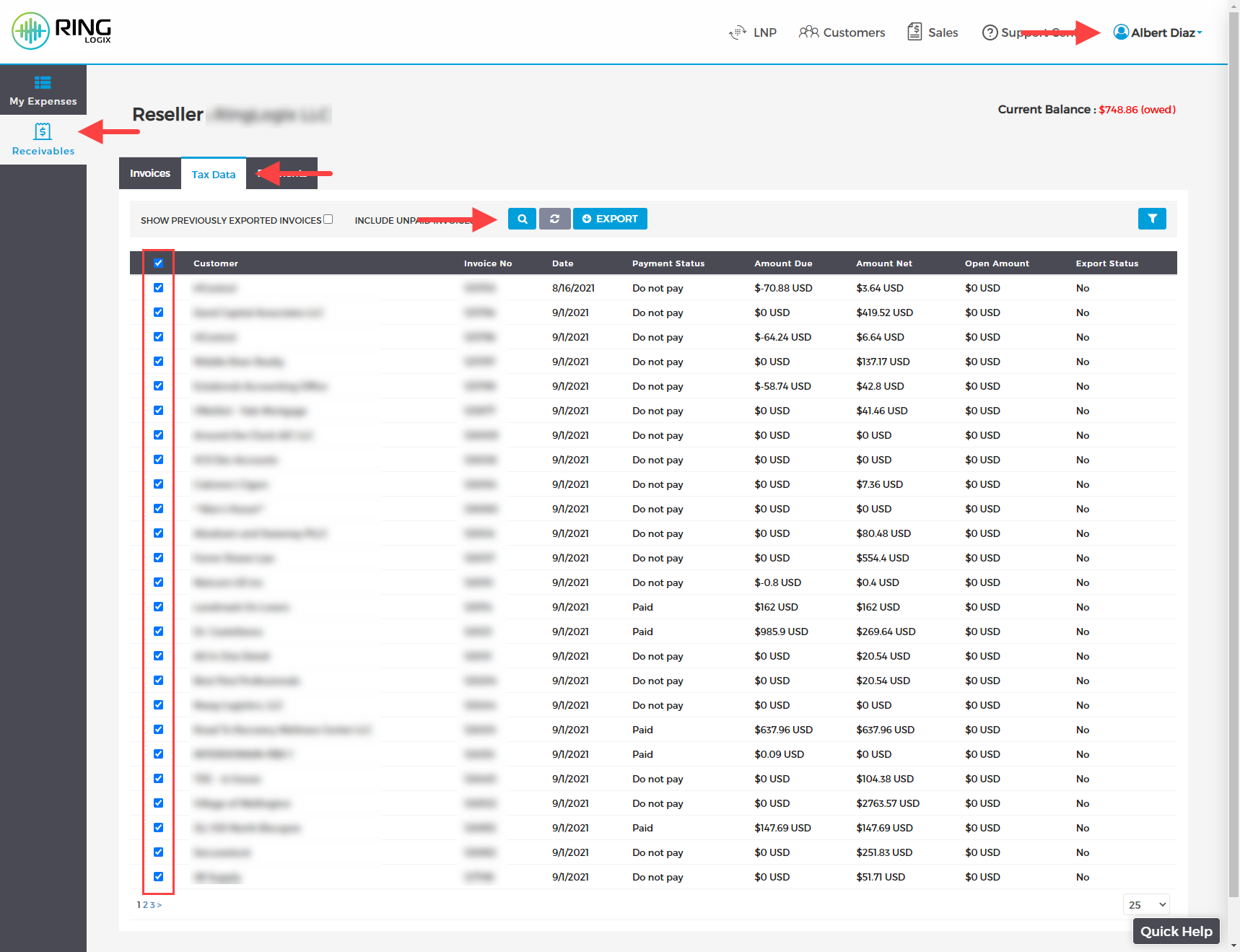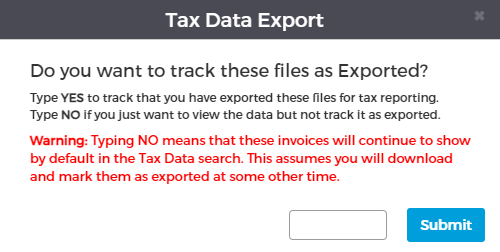Live Chat Software by Kayako |
Knowledgebase: Platform Reports
|
Exporting Tax Reports
Posted by Albert Diaz, Last modified by Michael Iglesias on 23 February 2024 05:14 PM
|
|
|
The RingOS VoIP Reseller Platform has a built-in telecom taxation engine that calculates and applies the appropriate taxes for services sold and billed through the RingOS platform. Similar to how businesses collect and remit sales taxes, these telecom taxes need to be reported and submitted on a regular basis. To help with this process. our Tax Export Reporting tool, offers our reseller partners the ability to export this tax data on a per invoice basis. The export package contains several items including a CSV file with all the data in one list (used by most partners handling tax reporting in-house) and per invoice compliance reporting .ssf files (used by most tax compliance and reporting vendors). Note: By default the tax report tool will search for all invoices in a 'paid' type Payment Status. This is the model most resellers preferred. You must check the "Include Unpaid Invoices" search option to include all invoices regardless of Payment Status. Execute and Export a Tax Report 1. Login to the RingLogix App. 1. Click the down arrow next to your name on the top right of the browser. 2. Select Reports. 3. Click the Receivables button on the left side menu. 4. Click on the Tax Data tab 5. Click the Search Icon. 6. Select the invoices you would like to export the tax data for. 6. Click on the Export button.  7. On the confirmation window: (a) Type YES to retrieve data AND mark it as exported. (b) Type NO to retrieve the data but not track it as exported 8. Click Submit  9. The export will start to download on your browser. Known Issue: Currently invoice tax data can only be exported and marked as exported once. Trying to export and mark as exported any invoice more than once will result in an error. If you have previously exported tax data and marked it as exported, and for any reason need to export it again, please contact our support team for assistance. What's Included on a Tax Report Export? 1. A CSV file with each tax line item sorted per invoice and per customer. 2. The corresponding .ssf tax compliance reporting file per invoice. These specially formatted files provides compliance and reporting vendors all the data they need to review and validate a customers jurisdiction, applicable taxes and applied rates. Invoice Payment Status Options Invoices in these Statuses are considered Paid. 1. Paid – Invoice paid in full. 2. Do not pay – The invoice total is zero (e.g. the customer did not use the service) or negative (e.g. the customer was given credit in an amount higher than the actual service usage) and there is no unpaid balance from the previous invoices. No payment is applicable to this invoice; it is produced only for the customer’s reference. 3. No payment required – This invoice’s amount due is lower than the collection threshold, so the customer is not required to pay it right now (but still has to pay it eventually). The collection process will not be launched if no payment is received. Invoices in these Statuses are considered Unpaid. 1. Unpaid – The normal status after invoice generation; the customer is expected to pay the amount due (calculated as the sum of the previous invoice’s amount due and this invoice’s total). 2. Overdue – No payment was received for this invoice and the due date has already passed. If applicable for this customer class, the collection process (notifications, suspension and termination) will be launched. 3. Partially paid – A payment was received, but it does not cover the full invoice amount (invoice total). 4. Previous balance remaining – Although this invoice has a zero (or negative) invoice total, when combined with the amount due from earlier invoices there is still an outstanding balance. So the customer is still required to make a payment (to be applied to the earlier invoices), after which this invoice’s status will become “Do not pay”. | |
|
|
